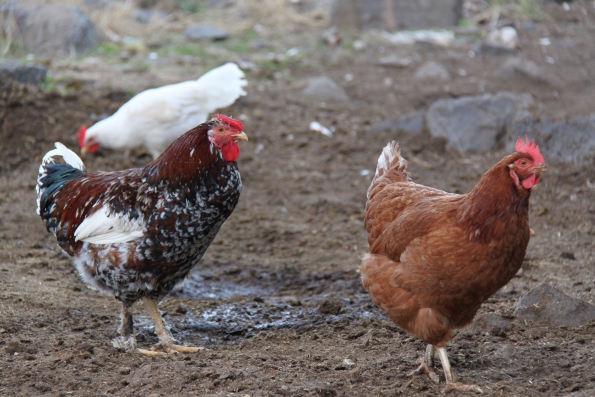By: Naimul Haq
Send to a friend
The details you provide on this page will not be used to send unsolicited email, and will not be sold to a 3rd party. See privacy policy.
[DHAKA] The highly 'pathogenic' or disease-causing bird flu virus 'H5N1' is continuously mutating and evolving in Bangladesh, necessitating stricter surveillance and biosecurity measures, new research reports caution.
A team of scientists from the Bangladesh Agricultural University (BAU), Mymensingh and the Bangladesh Livestock Research Institute (BLRI), Savar, who studied how H5N1 virus evolved at the molecular level since the country's first outbreak in 2007, report that newer strains have replaced the older ones.
The H5N1 virus acquired a crucial gene from a low disease-causing bird flu virus 'H9N2'; and accumulated single-point genetic changes that have the potential to modify the way the virus gets hinged to the host. The scientists have published details of their research in Avian Pathology and Preventive Veterinary Medicine this month.
Since its first detection in Bangladesh in February 2007, H5N1 has “become entrenched” in the country’s poultry farms, with 548 bird flu outbreaks, and seven human cases including one death, reported till October 2013.
Until 2010, a ‘çlade’ (a group of genetic variants showing common ancestry), which was dominating outbreaks in India and Pakistan in 2006 circulated in Bangladesh. But in 2011, two new clades that were present in Southeast Asian outbreaks since 2005 appeared in Bangladesh, they say.
“The two new viruses (first) detected in 2011 are somewhat different from the previously found avian influenza virus (H5N1),” Mohammad Giasuddin, Director of BLRI's national reference laboratory for avian influenza, and one of the authors of the papers, tells SciDev.Net. “The studies show that the virus is genetically changing.”
The scientists next found that only one of the two new clades dominated the 2012 outbreak, and appeared to have replaced the other two. “An extensive surveillance system is needed to confirm whether the original clade has disappeared,” the report in Avian Pathology says.
The lead author of the study, Md. Rafiqul Islam, professor at BAU’s department of veterinary pathology, says, “We noticed that the dominant virus also changed its host range from its common host chicken to other birds like, the crow, quail and duck. Laboratory tests at the BAU and BLRI also confirmed such astounding results.”
“We always recommended measures to introduce strict bio-security in the poultry farms as well as quick detection and depopulation of infected farms,” says Islam. “Recently, the government initiated vaccination of chickens against avian influenza in some selected districts, but the impact of vaccination is yet to be thoroughly evaluated.
“Vaccination must be complemented with routine surveillance, seromonitoring and farm bio-security,” says Islam.
“Avian influenza is an animal disease but there are new threats from certain strains of virus (H7N9) which kills humans but not its hosts. China, Taiwan and Malaysia have already suffered human casualties from this new type of virus but we (in Bangladesh) have to prepare for wider measures to prevent entry of the virus from those countries,” says Mahmudur Rahman, director of the Institute of Epidemiology, Disease Control and Research (IEDCR), in Dhaka.
> Link to the abstract in Avian Pathology
> Link to the abstract in Preventive Veterinary Medicine
This article has been produced by SciDev.Net's South Asia desk.














